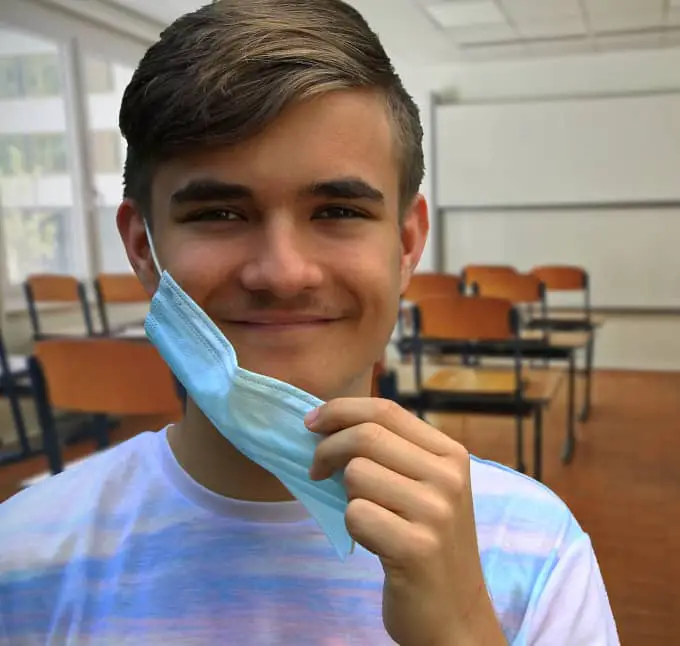What would be life like after the pandemic? How will people be behaving after going through the emergency measures imposed by governments, including quarantines, lock downs, viral checks, travel protocols, among others? And has the pandemic actually transpired in its final throes?
As of current writing, there appear to be convincing signs that at last the pandemic has ended. Countries have opened up their borders, people have become more audacious in plying the streets and even travelling far and wide in other places given the precipitous drop of COVID-19 cases in many localities.
But of course we should always remember that the spread of viruses has always been there. It’s just that the virus strains and mutants of the COVID-19 or SARS-CoV-2 virus that put many health services strained at its knees have become more manageable.
Just like its predecessors, COVID-19’s effects gradually faded in the second year since its onset in the last month of 2019. It’s not very much unlike the past pandemics, which lasted about or around two years, as many viruses have self-imposed limitations. They die a natural death when the host can neutralize its effect or the host dies. Viruses, unlike bacteria, runs its course and could not be easily eliminated by cures like the administration of antibiotics.
Experts predict that recession follows pandemics, but this should not always be the case, because there are other factors at play during recessions. Recession is a complex phenomenon, as the crisis may arise from a variety of causes, like loose monetary policy, global imbalances, misperception of risk, and lax financial regulation. Sound management practices is a key player that can define the direction of economic performance.
So why do I advance the idea that indeed now we are facing the life after the pandemic? What are the signs or indicators?
5 Indicators That Life After the Pandemic has Begun

People Have Become More Mobile
At least in our locality, I have seen more people walking in the streets and in the malls. Whenever I do my running, this week and the other week, many of the joggers are no longer wearing masks as they used to. Social distancing is virtually absent, although I keep wearing my mask as a precaution that there may be surges again.
However, even with these “violations” in health protocols as we have known them during lockdowns and surge in COVID-19 cases, no report of disturbing cases have cropped up after over two weeks of more relaxed government measures to halt the spread of the ubiquitous and highly contagious mutants of the coronavirus.
Local news and even worldwide news on life-threatening mutants have also waned down, except that early morning news today that I read about China implementing lockdowns because of Omicron. That was last week.
Governments Have Eased Lockdowns
Many governments worldwide have also eased lockdowns, abandoning masks, and lifting travel restrictions. Finally, the governments’ efforts have paid off, at a high price as the pandemic persisted for a long time.
Back to School Calls
While many of the students have apparently benefitted from the remote or modular online learning modality to avoid the risk of being infected by COVID-19, there are directives for teachers to go back to work and school operation is at 100%. At least for those who have been vaccinated, life has gone back to “normal.”
Some students may be apprehensive of the back to school directives, but these apprehensions get allayed as news of virus outbreaks get fewer and fewer each day.
Most of the news I read today turns their attention to the Ukraine-Russia war, an entirely different story from that time that news on the virus appears to be the only menu for the day.
The reason news writers divert their attention to the ongoing war between the two countries may be because of the waning interest in news about the pandemic. I feel that even with news of virus surges here and there, such news is no longer vehemently shared as before in social media.
The pandemic-related news appears to be no longer palatable a topic to discuss. It’s either that the people are tired of such news, or in fact, the pandemic has ended. I believe the latter as I have advanced these observations. Life after the pandemic has indeed begun. Let’s pick up the pieces of our life and go forward with caution.
Travel Restrictions Have Been Lifted
As people have the tendency not to travel with so many restrictions to deal with preventing the spread of COVID-19, once the virus cases have cleared up, it is just a matter of common sense that the government has to lift its travel restrictions to jumpstart it economy. At the first sign of apparent control of the spread of the virus, particularly that caused by the highly contagious but seemingly less virulent Omicron variant, travel restrictions have eased up.
Many countries, including mine, have already lifted its travel restrictions, particularly for vaccinated tourists. Even unvaccinated tourists may travel without the RT-PCR and antigen tests in some places with virtually no COVID-19 cases coming up.
Economic Activity Has Picked Up
Given the eased restrictions, more establishments have opened up. Malls are no longer requiring passes as it used to except for that thermal scanner that monitors their customers’ temperature upon entry. There are fewer rules to prevent people from leaving their homes. More people have flocked to the restaurants and economic life has become vibrant as it used to be.
Our life after the pandemic have begun. Now, let’s face another challenge—the increasing fuel prices and price of goods. Will the economy revive quickly or will post-pandemic economic recession take place as in the past?
Let’s brace ourselves and do everything we can to regain our finances and reestablish life’s balance. It’s not an insurmountable challenge as we engage our creative minds and be as resilient persons as we can be. Life after the pandemic may differ significantly from that we had before it.
For disasters like this, check out the following video on how to survive financial turmoil. Better be ready than sorry.


